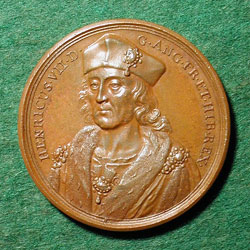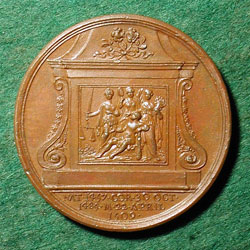

|
HENRY VII |
|
|
Henry VII (Henry Tudor) (1457-1509), King of England (1485-1509), was the founder of the Tudor dynasty, being the son of Edmund Tudor, Earl of Richmond, and Margaret Beaufort. His claim to the throne was weak until he became, with the death of Henry VI in 1471, the main surviving male in the House of Lancaster. He then went to France, where the Yorkists made several attempts on his life before he landed with an army on the English coast in 1485. He became king by defeating Richard III in the final battle of the Wars of the Roses at Bosworth Field. He then united the houses of Lancaster and York by marrying the Yorkist heiress, Elizabeth. His financial acumen and encouragement of trade through commercial treaties restored England’s fortunes after the devastation of civil war. He also established peaceful relations with France and with Scotland. In 1501 he forged an alliance between England and Spain by marrying his son Arthur to Catherine of Aragon. He took effective action against pretenders to his throne, notably Lambert Simnel and Perkin Warbeck, who claimed to be the young Yorkist princes, Edward of Warwick and Richard of York, last seen in the Tower. When he died there was no opposition to the succession of his son, Henry VIII, who also inherited the fortune Henry had created. (From O’Brien) |
|